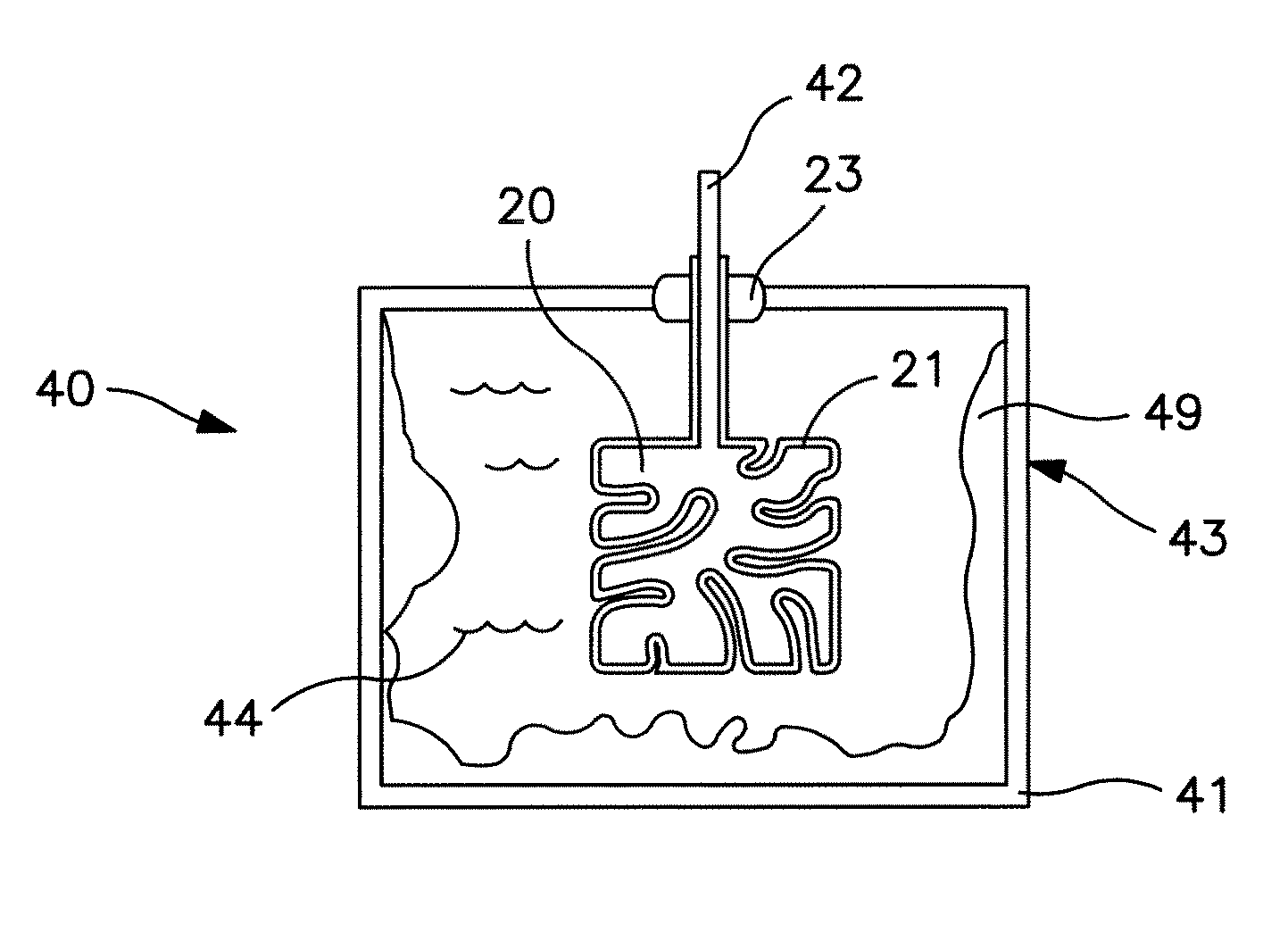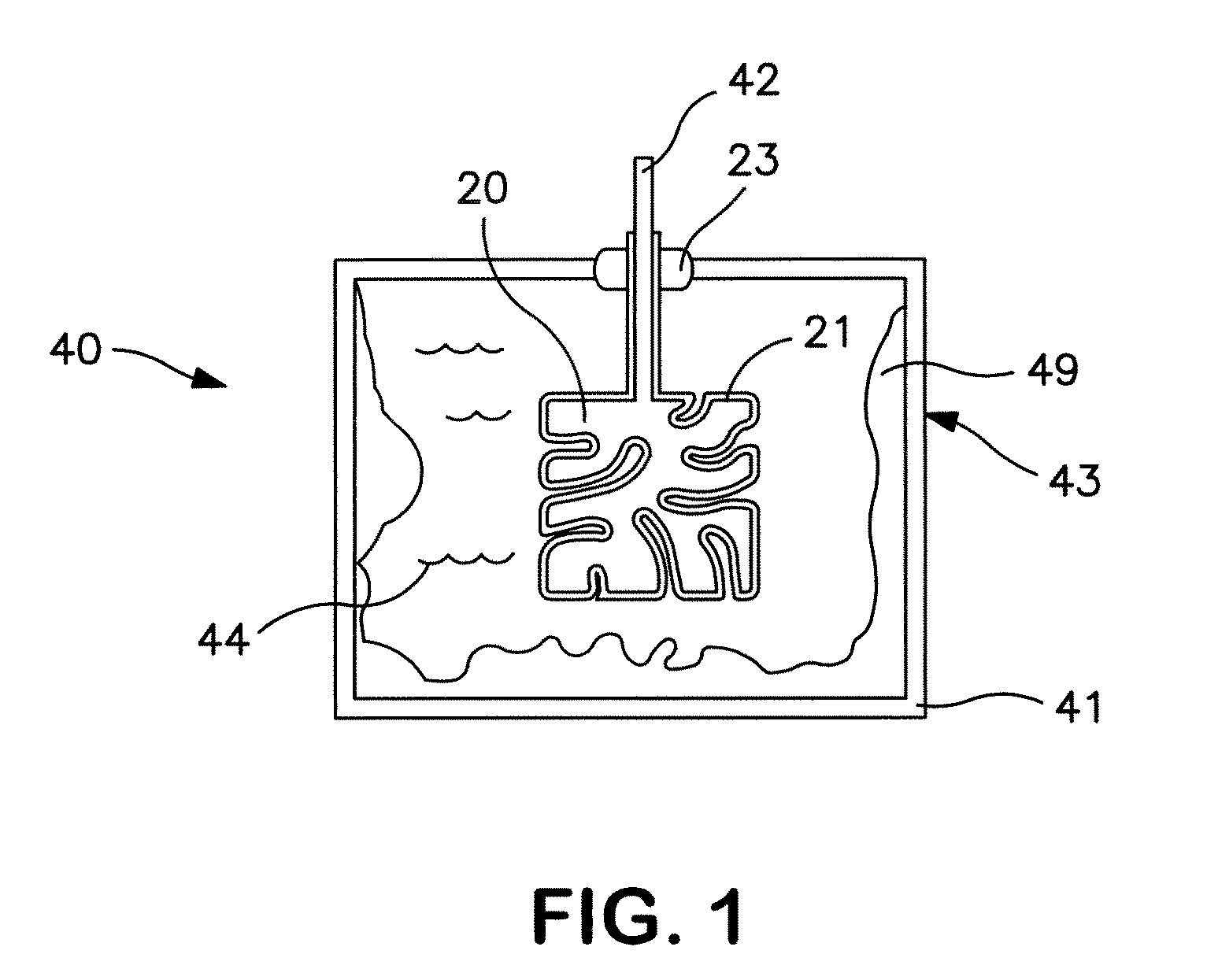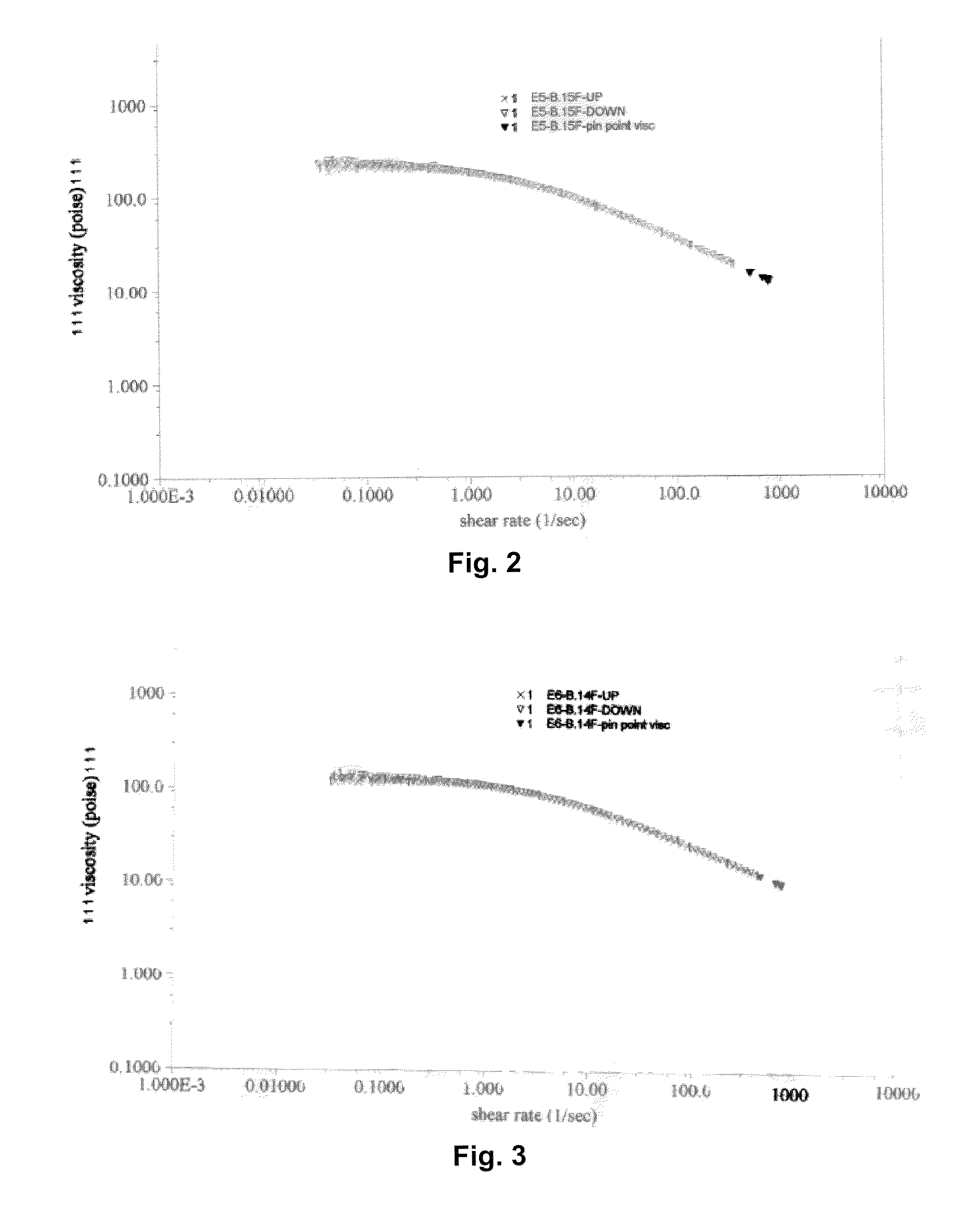Electrolytic capacitor containing a liquid electrolyte
a technology of liquid electrolyte and electrolytic capacitor, which is applied in the direction of liquid electrolytic capacitor, electrolytic capacitor, electrochemical generator, etc., can solve the problems of reducing the energy density of the capacitor, reducing the electrical resistance of the liquid electrolyte and separator material, and having a higher electrical resistan
- Summary
- Abstract
- Description
- Claims
- Application Information
AI Technical Summary
Benefits of technology
Problems solved by technology
Method used
Image
Examples
example 1
[0048]An electrolyte was formed by dissolving 3.18 grams of LiClO4 (Sigma Aldrich) in 10 milliliters of dry propylene carbonate (Sigma Aldrich). Separately, 1 gram of poly(propylene carbonate) (Sigma-Aldrich) and 2 grams of poly(ethylene oxide) (Sigma-Aldrich) were each dissolved in 10 milliliters of propylene carbonate. The poly(propylene carbonate) was then mixed with the poly(ethylene oxide) solution, which resulted in a viscous clear solution that did not exhibit phase separation. The LiClO4 solution was thereafter added to the polymer mixture to form a clear electrolyte, which was then cooled to room temperature. The viscosity of the resulting electrolyte was recorded by placing 1 ml onto a 4-cm plate in a plate-plate (Model AR1000 Thermal Analysis and Rheology) rheometer. The results are shown in FIG. 2. At 1 sec−1, the viscosity was 34 poise (at 25° C.).
example 2
[0049]An electrolyte was formed as described in Example 1, except that 1.5 grams of poly(propylene carbonate) and 1.5 grams of poly(ethylene oxide) were employed. The viscosity of the resulting electrolyte was recorded by placing 1 ml onto a 4-cm plate in a plate-plate (Model AR1000 Thermal Analysis and Rheology) rheometer. The results are shown in FIG. 3. At 1 sec−1, the viscosity was 120 poise (at 25° C.).
example 3
[0050]An electrolyte was formed as described in Example 1, except that 2 grams of poly(propylene carbonate) and 1 gram of poly(ethylene oxide) were employed. The viscosity of the resulting electrolyte was recorded by placing 1 ml onto a 4-cm plate in a plate-plate (Model AR1000 Thermal Analysis and Rheology) rheometer. The results are shown in FIG. 4. At 1 sec−1, the viscosity was 181 poise (at 25° C.).
PUM
 Login to View More
Login to View More Abstract
Description
Claims
Application Information
 Login to View More
Login to View More - R&D
- Intellectual Property
- Life Sciences
- Materials
- Tech Scout
- Unparalleled Data Quality
- Higher Quality Content
- 60% Fewer Hallucinations
Browse by: Latest US Patents, China's latest patents, Technical Efficacy Thesaurus, Application Domain, Technology Topic, Popular Technical Reports.
© 2025 PatSnap. All rights reserved.Legal|Privacy policy|Modern Slavery Act Transparency Statement|Sitemap|About US| Contact US: help@patsnap.com



